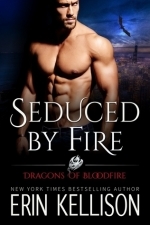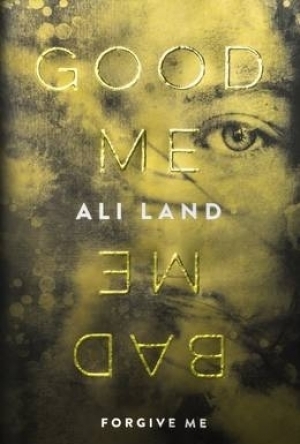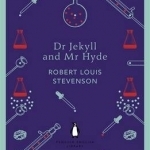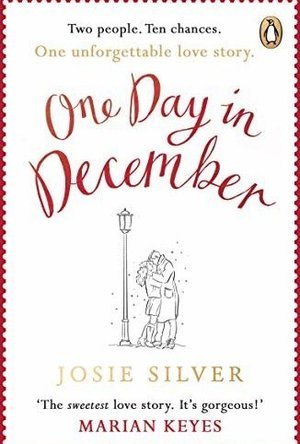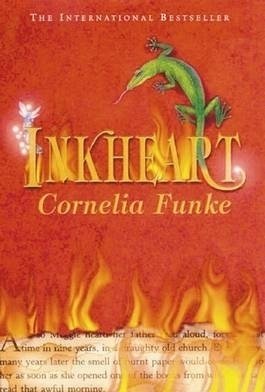Search
Search results
The first half of The Serpent and the Moon mainly deals with Francois I's reign as king and has little to do with the love triangle. Frankly, the whole book itself hasn't much to do with the love triangle or "one of the great love stories of all time," but more to do with the political intrigue of Henri I and his father's reigns. Oh, and lest I forget, Henri, Diane, and both of their symbols, monograms, etc. I honestly don't know what the whole fascination of that was all about, but it showed up everywhere.
On page 187 the princess tells us that it is a man's way of thinking that Diane wouldn't have become Henri's mistress if he hadn't become dauphin. I disagree, it is a realist's view, and frankly, I think it's fully possible that was how it started. Yes, maybe she was flattered by his attention too, but to consider having him as a lover in light of how much she was in his life growing up, it's a bit creepy. Oedipus comes to mind. I believe he was infatuated with her from a young age and it most likely progressed into love, for both of them. I envision her grabbing the chance at being the mistress of a king and being older, she knew how to mould and persuade him. Whether or not it was a true love story, I really don't know; I'm not sure anyone does and I don't care all that much.
As many other reviewers have stated, there is an obvious bias. The readers are warned in the introduction, but even if you know that, there's still the possibility that the work as a whole might be neutral. Unfortunately, that's not the case. Maybe if it had only been a slight bias, I wouldn't have cared so much, but when an author heaps praise on one person and how they accomplish everything, and then turn around and bash someone else for the exact same thing. Well, that's just hypocrisy.
From the book, the author would have you believe that Diane de Poitiers got to where she was merely by being a good, honest, gracious, and pious woman and Catherine de' Medici did it by being a cold, heartless, evil, spiteful person. I'm sorry but you cannot have climbed to the heights Diane did, especially in those times, without being conniving in one way or the other. I'm sure she did the same things Catherine did, so quit holding Diane up on a pedestal; she's really not a goddess, just a woman. Diane is a white light, Catherine is black as death and there isn't any grey between them for most of the book. By the end of the book I really took the "history" lightly, mainly that of these two women, more than anything else; it was just an unfair assessment. And with the author's snarky and catty remarks directed towards Catherine, saying she has a "fat little heart," well, that was just uncalled for. Then at the end, her words were so disgusting about Catherine's behavior towards Diane, saying how petty she was and she did things purely due to "feminine spite". Catherine could have done much worse to her but she didn't! Of course, Ms. Perfect D. was always so respectful and exemplary of Catherine. Give me a break. Maybe some of the things said in the book were true about both women, but then again, maybe not. Most is lost to history.
If Princess Michael of Kent's plan was for me to sympathize and idolize Diane de Poitiers, as she does, it backfired. Now I don't ever care to ever hear about her again, and I love history of all kinds. On the other hand, I have already ordered two books about Catherine de' Medici from the library. Most likely the opposite of what she wanted. I honestly don't blame Catherine if she was bitter, who wouldn't be in that situation? Even if it was a different time, circumstance, and an arranged marriage? I refuse to believe Diane was this perfect being, a goddess, virtuous as can be, a victim - nobody is all these things and I don't know why the author cannot see any imperfections and insists on romanticizing her.
Even though I hated how biased this book was, I still appreciate the amount of research this must have taken, it was fairly well-written in form, and there was loads of information. I'd only recommend this to Catherine haters, loathers, or serious dislikers. With the princess's flair for the dramatic and speculation on feelings and actions, she might want to focus on writing works of fiction instead. I have no desire to read anything by this author again.
On page 187 the princess tells us that it is a man's way of thinking that Diane wouldn't have become Henri's mistress if he hadn't become dauphin. I disagree, it is a realist's view, and frankly, I think it's fully possible that was how it started. Yes, maybe she was flattered by his attention too, but to consider having him as a lover in light of how much she was in his life growing up, it's a bit creepy. Oedipus comes to mind. I believe he was infatuated with her from a young age and it most likely progressed into love, for both of them. I envision her grabbing the chance at being the mistress of a king and being older, she knew how to mould and persuade him. Whether or not it was a true love story, I really don't know; I'm not sure anyone does and I don't care all that much.
As many other reviewers have stated, there is an obvious bias. The readers are warned in the introduction, but even if you know that, there's still the possibility that the work as a whole might be neutral. Unfortunately, that's not the case. Maybe if it had only been a slight bias, I wouldn't have cared so much, but when an author heaps praise on one person and how they accomplish everything, and then turn around and bash someone else for the exact same thing. Well, that's just hypocrisy.
From the book, the author would have you believe that Diane de Poitiers got to where she was merely by being a good, honest, gracious, and pious woman and Catherine de' Medici did it by being a cold, heartless, evil, spiteful person. I'm sorry but you cannot have climbed to the heights Diane did, especially in those times, without being conniving in one way or the other. I'm sure she did the same things Catherine did, so quit holding Diane up on a pedestal; she's really not a goddess, just a woman. Diane is a white light, Catherine is black as death and there isn't any grey between them for most of the book. By the end of the book I really took the "history" lightly, mainly that of these two women, more than anything else; it was just an unfair assessment. And with the author's snarky and catty remarks directed towards Catherine, saying she has a "fat little heart," well, that was just uncalled for. Then at the end, her words were so disgusting about Catherine's behavior towards Diane, saying how petty she was and she did things purely due to "feminine spite". Catherine could have done much worse to her but she didn't! Of course, Ms. Perfect D. was always so respectful and exemplary of Catherine. Give me a break. Maybe some of the things said in the book were true about both women, but then again, maybe not. Most is lost to history.
If Princess Michael of Kent's plan was for me to sympathize and idolize Diane de Poitiers, as she does, it backfired. Now I don't ever care to ever hear about her again, and I love history of all kinds. On the other hand, I have already ordered two books about Catherine de' Medici from the library. Most likely the opposite of what she wanted. I honestly don't blame Catherine if she was bitter, who wouldn't be in that situation? Even if it was a different time, circumstance, and an arranged marriage? I refuse to believe Diane was this perfect being, a goddess, virtuous as can be, a victim - nobody is all these things and I don't know why the author cannot see any imperfections and insists on romanticizing her.
Even though I hated how biased this book was, I still appreciate the amount of research this must have taken, it was fairly well-written in form, and there was loads of information. I'd only recommend this to Catherine haters, loathers, or serious dislikers. With the princess's flair for the dramatic and speculation on feelings and actions, she might want to focus on writing works of fiction instead. I have no desire to read anything by this author again.
Merissa (13540 KP) rated Seduced by Fire (Dragons of Bloodfire #3) in Books
Sep 8, 2017
Seduced by Fire (Dragons of Bloodfire #3) by Erin Kellison
Seduced by Fire is the third book in the Dragons of Bloodfire series. In this book our two main characters are both dragons, and both have secrets to keep. Ryder, also known as Professor Ted, has managed to live amongst the humans, working as a professor. Everything he has worked for, and lived with, becomes a moot point when he crosses paths with a Tempus during one of his lectures. He is exposed to the human world, and has decisions to make. Aura is a Sun Dragon, and you don't really know much about her to begin with, except that her and Ryder have a history. As the story progresses you find out more about both our main characters, and the story itself. We reunite with Warrick and Samantha from book 2, whilst Thane from book 1 is only spoken about.
Something was missing from this book for me, and I'll be damned if I can figure out what it was. I love Erin Kellison's work, and this, by technical standards, is the same high quality as you would expect, with no editing or grammatical errors that I could see. However, I just didn't feel like I connected with the characters or the story as much as the others, especially book 1. I am sure that this will only be my opinion in amongst the rest, as it is more than usual to get lost in the worlds that Erin Kellison produces.
So, for me, this book was good and I did enjoy it. It just didn't wow me like others have in the past. I would still recommend both this book, and others by this author, to anyone who loves paranormal romance.
* A copy of this book was provided to me with no requirements for a review. I voluntarily read this book, and my comments here are my honest opinion. *
Merissa
Archaeolibrarian - I Dig Good Books!
Something was missing from this book for me, and I'll be damned if I can figure out what it was. I love Erin Kellison's work, and this, by technical standards, is the same high quality as you would expect, with no editing or grammatical errors that I could see. However, I just didn't feel like I connected with the characters or the story as much as the others, especially book 1. I am sure that this will only be my opinion in amongst the rest, as it is more than usual to get lost in the worlds that Erin Kellison produces.
So, for me, this book was good and I did enjoy it. It just didn't wow me like others have in the past. I would still recommend both this book, and others by this author, to anyone who loves paranormal romance.
* A copy of this book was provided to me with no requirements for a review. I voluntarily read this book, and my comments here are my honest opinion. *
Merissa
Archaeolibrarian - I Dig Good Books!
Whatchareadin (174 KP) rated Good Me, Bad Me in Books
May 10, 2018
Milly is 15 years old. She has just been placed with a foster family because she has just turned her mother in to the police. Why would a 15 year old need to turn their parent in to the police? Her mother is a serial killer who kills children. Milly is afraid that she may turn out just like her mother. Does she have it in her to be good, or is she bad like her mother? How much of our make up is nature and how much is nurture?
Thank you to Flatiron Books and Ali Land for an advanced reader's copy of this book.
I was so excited to read this book. I couldn't wait. The description alone is enough to get you intrigued. While reading the book, I kept waiting for something to happen. Something big, something major!!! It never happened. Milly did a few little things to "test" her limits on the side of good or bad, but nothing I don't think a typical teenager who was being bullied would have done in her same situation.
After turning in her mother to the police, Milly is sent to live with a foster family. The father is her psychiatrist, the mother is in need of one, and the daughter is jealous and a bully from the time Milly moves in. Milly tells the story as if she is talking to her mother. It covers a span of a few months, while Milly is waiting to give her testimony in her mother's trial. Overall it's a good story. I don't think I would put it in a category of psychological thriller, because it didn't leave me on the edge of my seat and there wasn't a major WOW moment.
This is a debut novel from author Ali Land, and I will see what her next book will be.
You can see all my reviews at http://whatchatreadin.blogspot.com
Thank you to Flatiron Books and Ali Land for an advanced reader's copy of this book.
I was so excited to read this book. I couldn't wait. The description alone is enough to get you intrigued. While reading the book, I kept waiting for something to happen. Something big, something major!!! It never happened. Milly did a few little things to "test" her limits on the side of good or bad, but nothing I don't think a typical teenager who was being bullied would have done in her same situation.
After turning in her mother to the police, Milly is sent to live with a foster family. The father is her psychiatrist, the mother is in need of one, and the daughter is jealous and a bully from the time Milly moves in. Milly tells the story as if she is talking to her mother. It covers a span of a few months, while Milly is waiting to give her testimony in her mother's trial. Overall it's a good story. I don't think I would put it in a category of psychological thriller, because it didn't leave me on the edge of my seat and there wasn't a major WOW moment.
This is a debut novel from author Ali Land, and I will see what her next book will be.
You can see all my reviews at http://whatchatreadin.blogspot.com
graveyardgremlin (7194 KP) rated Dead Sexy Dragon (Dragon Heat, #1) in Books
Feb 15, 2019
I recently went back to NetGalley after a long duration and saw this was still sitting on my shelf. About two and a half years later. Oops. I sent it to my Kindle again and was surprised to see it show up. I figured it was high time I read and reviewed the story. Luckily it's about novella length, maybe shorter, so I thought it'd be fast and easy.
<b>Dead Sexy Dragon</b> is the first book in a paranormal series featuring shape-shifting (you guessed it!) dragons. Cora's the heroine fleeing from some trouble to her late brother's best friend and old Marine buddy, Stig Wyvern (I see what you did thar). Unfortunately for the both of them, it's his time of the month. Just kidding, but he goes through a nine-day period every three years where he's in heat. Sadly it's not called <a href="http://memory-alpha.wikia.com/wiki/Pon_farr"; target="_blank">pon farr</a>.
<IMG src="http://rs32.pbsrc.com/albums/d6/satilanna/spock_pon_farr_by_monicaaofthesand_zps9ne2inv0.png?w=480&h=480&fit=clip">;
Anywho, they've been hot for each other for years but neither of them knows it. Naturally. Pretty soon, like the next day, they have loads of sex after she finds out he's a dragon. The sexual interactions take up around 40% of the book and treads the line between romance and erotica. Some stuff happens that I don't want to give away, but Cora ends up in peril, and then Stig. It's a romance so obviously you know how it ends.
The story is pretty rushed, and the first couple of pages were a bit rough, but there are some interesting ideas here, so I just might pick up the next book and see where it's going. In the end, it didn't rock my socks, but it was an entertaining way to spend an hour or so.
Received from Netgalley for review.
<b>Dead Sexy Dragon</b> is the first book in a paranormal series featuring shape-shifting (you guessed it!) dragons. Cora's the heroine fleeing from some trouble to her late brother's best friend and old Marine buddy, Stig Wyvern (I see what you did thar). Unfortunately for the both of them, it's his time of the month. Just kidding, but he goes through a nine-day period every three years where he's in heat. Sadly it's not called <a href="http://memory-alpha.wikia.com/wiki/Pon_farr"; target="_blank">pon farr</a>.
<IMG src="http://rs32.pbsrc.com/albums/d6/satilanna/spock_pon_farr_by_monicaaofthesand_zps9ne2inv0.png?w=480&h=480&fit=clip">;
Anywho, they've been hot for each other for years but neither of them knows it. Naturally. Pretty soon, like the next day, they have loads of sex after she finds out he's a dragon. The sexual interactions take up around 40% of the book and treads the line between romance and erotica. Some stuff happens that I don't want to give away, but Cora ends up in peril, and then Stig. It's a romance so obviously you know how it ends.
The story is pretty rushed, and the first couple of pages were a bit rough, but there are some interesting ideas here, so I just might pick up the next book and see where it's going. In the end, it didn't rock my socks, but it was an entertaining way to spend an hour or so.
Received from Netgalley for review.
Bubblesreview (110 KP) rated Dr Jekyll and Mr Hyde in Books
Mar 25, 2019 (Updated Mar 25, 2019)
Pros:
▪ Unique story
▪ Short Story
▪ Extra short story at the back
Cons:
▪ Boring start
▪ Constructed poorly
▪ Not much to offer if you know the plot twist (who doesn't right?)
Ok so for as long as I can remember I've always known the basis of the story of Jekyll and Hyde, particularly when someone would have a mood swing another would note that they're acting like Jekyll and Hyde, for example.
However, I've never actually read the story.
A quick read it was, less than 100 pages, it's the shortest story I've read yet. Considering the amount of tv/film recreations of this story I was shocked to find its so short and it's really not very descriptive on terms of Mr Hydes character in particular, which is what the author was aiming for.
If you already know the twist in this story then the book won't really get you revved up, I found it very dry and bland. I can however imagine that back in the 1880s this book would've been an incredible read and very different and creative.
I'm not going to conclude by saying this book was awful because it's far from it, it does have good parts.
The last chapter in particular, Henry Jekylls full statement, was the best part of this book, it's the only part that kept me intrigued, it's just getting there that's the problem.
Aside from the boring background story of the lawyer and the will, the actual story of Jekyll and Hyde and the way Jekyll comes about finding Hyde is actually something of a mind blowing creation, and very original.
This particular print had an extra short story afterwards, the bottle and the imp, now this story I did find intriguing, it captivated me. I found it similar to Aladdin with a magic lamp, but in a much shorter story and a magic bottle and an imp instead of a lamp and genie.
▪ Unique story
▪ Short Story
▪ Extra short story at the back
Cons:
▪ Boring start
▪ Constructed poorly
▪ Not much to offer if you know the plot twist (who doesn't right?)
Ok so for as long as I can remember I've always known the basis of the story of Jekyll and Hyde, particularly when someone would have a mood swing another would note that they're acting like Jekyll and Hyde, for example.
However, I've never actually read the story.
A quick read it was, less than 100 pages, it's the shortest story I've read yet. Considering the amount of tv/film recreations of this story I was shocked to find its so short and it's really not very descriptive on terms of Mr Hydes character in particular, which is what the author was aiming for.
If you already know the twist in this story then the book won't really get you revved up, I found it very dry and bland. I can however imagine that back in the 1880s this book would've been an incredible read and very different and creative.
I'm not going to conclude by saying this book was awful because it's far from it, it does have good parts.
The last chapter in particular, Henry Jekylls full statement, was the best part of this book, it's the only part that kept me intrigued, it's just getting there that's the problem.
Aside from the boring background story of the lawyer and the will, the actual story of Jekyll and Hyde and the way Jekyll comes about finding Hyde is actually something of a mind blowing creation, and very original.
This particular print had an extra short story afterwards, the bottle and the imp, now this story I did find intriguing, it captivated me. I found it similar to Aladdin with a magic lamp, but in a much shorter story and a magic bottle and an imp instead of a lamp and genie.
ArecRain (8 KP) rated Take Me for Granted (Take Me, #1) in Books
Jan 18, 2018
For someone who doesnt like reading bad boy/good girl tropes, I seem to be reading a lot of them lately. I dont even know why I picked up a copy of Take Me for Granted. The synopsis was one I have read a thousand times and the cover was nothing eye catching.
But let me tell you I am sure glad I did. If downloading it was whim then I dont even know what opening it up was. I was hooked from the very first page though. I identified with Ari more than most female leads. While I didnt grow up in a rich family nor do I attend an Ivy League school, I care more about schoolwork than I do most people. Reading Aris inner monologues and thoughts had me laughing because I understood. Its so easy to push people away, create a cold demeanor, and escape into school work. School doesnt hurt you the way people can.
Grant was also absolutely charming. He reminds me so much of my own fiancé in ways and I loved listening to him banter with Ari. At first, his pushiness rubbed me the wrong way. Having been in an abusive relationship, I wanted so much to just scream no in his face over and over again until he understood. However, he wasn't actually harmful in his pushiness, just persistent, and, honestly, had the patience of saint when it came to Ari considering how wishy washy she was at times.
I really enjoyed the story. Linde has a lovely, easy style and is a fantastic storyteller. I especially liked being able to read from both Grant's and Ari's POVs. The cliffhanger nearly destroyed me though, so you better believe I am going to continue the series. Somehow Lindes characters crawled their way beneath my skin, and I wont be content until I know they received a happy ending.
But let me tell you I am sure glad I did. If downloading it was whim then I dont even know what opening it up was. I was hooked from the very first page though. I identified with Ari more than most female leads. While I didnt grow up in a rich family nor do I attend an Ivy League school, I care more about schoolwork than I do most people. Reading Aris inner monologues and thoughts had me laughing because I understood. Its so easy to push people away, create a cold demeanor, and escape into school work. School doesnt hurt you the way people can.
Grant was also absolutely charming. He reminds me so much of my own fiancé in ways and I loved listening to him banter with Ari. At first, his pushiness rubbed me the wrong way. Having been in an abusive relationship, I wanted so much to just scream no in his face over and over again until he understood. However, he wasn't actually harmful in his pushiness, just persistent, and, honestly, had the patience of saint when it came to Ari considering how wishy washy she was at times.
I really enjoyed the story. Linde has a lovely, easy style and is a fantastic storyteller. I especially liked being able to read from both Grant's and Ari's POVs. The cliffhanger nearly destroyed me though, so you better believe I am going to continue the series. Somehow Lindes characters crawled their way beneath my skin, and I wont be content until I know they received a happy ending.
MoMoBookDiary (20 KP) rated One Day in December: A Christmas Love Story in Books
Oct 1, 2018
I loved the idea of this book and it sounded just my perfect romance read. However it was so much more than I could have hoped for! I read it in one sitting and found the lovely sunny day had gone dark and wet by the time I moved from the sofa - but oh! what a day I had in the world of this amazingly beautiful love story!
The story is told over a ten year period, beginning in December 2008 which is where the Christmas part comes in. The story is told in sort of diary form from the characters perspectives and jumps many months at a time so you get the good bits whilst the story unfolds.
It sounded like it could be yet another love triangle with the obvious difficulties however it is so unlike anything I have read before. It is a book for all ages – no nasty double crossing, no detailed erotic sex scenes or nasty, bitchy comments we are so used to being part of daily lives – however, there are many tear-worthy moments in this absolutely wonderful true love story.
The author has found a way of telling a story in today’s times without having all the drama that we are so used to seeing in these types of situations. Everyone deals with events in a very mature way and forgiving way which ensures that whilst reading you can live in a feel-good bubble. I did plenty of bubbling while reading and many sharp intakes of breath at times too. It is a story of love, heartache, friendship and the unbreakable bonds.
I can honestly say I will be recommending this to everyone I speak to in person, on twitter, Facebook and anywhere else that I can. It’s amazingly beautiful – you really should go read it!
Thanks to Josie Silver, NetGalley and Penguin for giving me the opportunity to read and review prior to the paperback release in October 2018.
The story is told over a ten year period, beginning in December 2008 which is where the Christmas part comes in. The story is told in sort of diary form from the characters perspectives and jumps many months at a time so you get the good bits whilst the story unfolds.
It sounded like it could be yet another love triangle with the obvious difficulties however it is so unlike anything I have read before. It is a book for all ages – no nasty double crossing, no detailed erotic sex scenes or nasty, bitchy comments we are so used to being part of daily lives – however, there are many tear-worthy moments in this absolutely wonderful true love story.
The author has found a way of telling a story in today’s times without having all the drama that we are so used to seeing in these types of situations. Everyone deals with events in a very mature way and forgiving way which ensures that whilst reading you can live in a feel-good bubble. I did plenty of bubbling while reading and many sharp intakes of breath at times too. It is a story of love, heartache, friendship and the unbreakable bonds.
I can honestly say I will be recommending this to everyone I speak to in person, on twitter, Facebook and anywhere else that I can. It’s amazingly beautiful – you really should go read it!
Thanks to Josie Silver, NetGalley and Penguin for giving me the opportunity to read and review prior to the paperback release in October 2018.
This is a book I have had on my to read pile for some time, and having a bit of extra free time on my hands have finally got round to. I vaguely remember seeing the film that was made, but luckily the film wasn’t that memorable so I couldn’t remember how it ended. However, I enjoyed the book very much and realise why the film maybe didn’t do as well as was expected. Most of the characters are either hiding their emotions or a secret of some kind throughout the story, this did not portray over well in the film and just made everything pretty confusing.
On the whole this is a book about a father and daughter who love to read and have the ability to make books come to life and this appealed to me greatly. It was a slow starter but built up the characters well and I really wanted to know what happened to them. I am not saying this book was the pinnacle of literary accomplishments, but I enjoyed the fantasy, the adventure and how with some characters, even towards the end you weren’t sure if you should like them or not. For instance the character of Dustfinger who is ripped from his story into a world he despises and he yearns just to return home. You never know whether to trust him, to not trust him, to pity him or to think he is selfish. Not all the characters in Inkheart fall into a black and white category, which is refreshing, especially in a book aimed at slightly younger/teen readers.
Great amounts of cheesy humour, good general read I would definitely read the next two books as the characters are all built up now so I think the next books would pick up quicker. Would have probably enjoyed this book more when I was in my yearly teens.
On the whole this is a book about a father and daughter who love to read and have the ability to make books come to life and this appealed to me greatly. It was a slow starter but built up the characters well and I really wanted to know what happened to them. I am not saying this book was the pinnacle of literary accomplishments, but I enjoyed the fantasy, the adventure and how with some characters, even towards the end you weren’t sure if you should like them or not. For instance the character of Dustfinger who is ripped from his story into a world he despises and he yearns just to return home. You never know whether to trust him, to not trust him, to pity him or to think he is selfish. Not all the characters in Inkheart fall into a black and white category, which is refreshing, especially in a book aimed at slightly younger/teen readers.
Great amounts of cheesy humour, good general read I would definitely read the next two books as the characters are all built up now so I think the next books would pick up quicker. Would have probably enjoyed this book more when I was in my yearly teens.
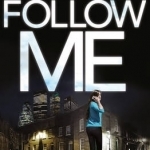
Follow Me: The Bestselling Crime Novel Terrifying Everyone This Year
Book
**'We've been waiting for a novel that shows just how creepy and scary social media actually is and...

